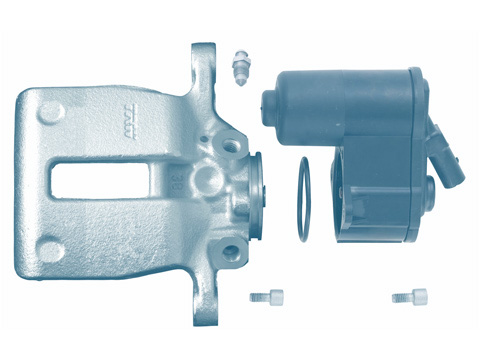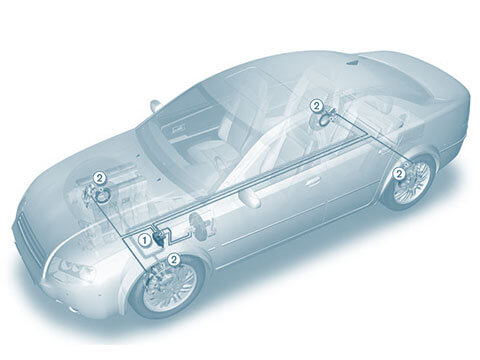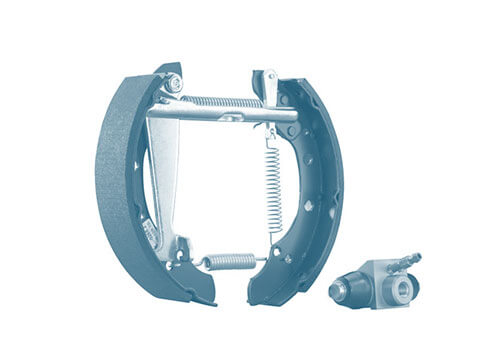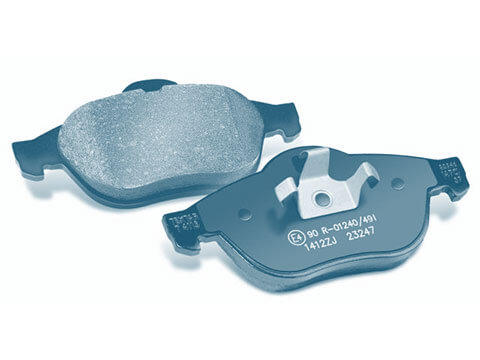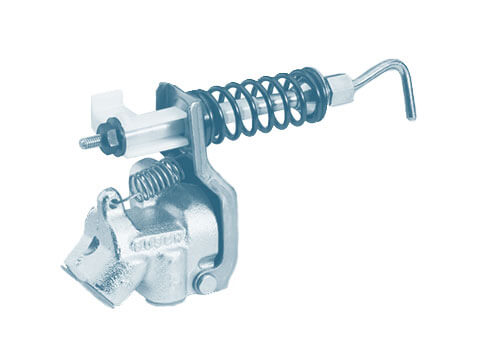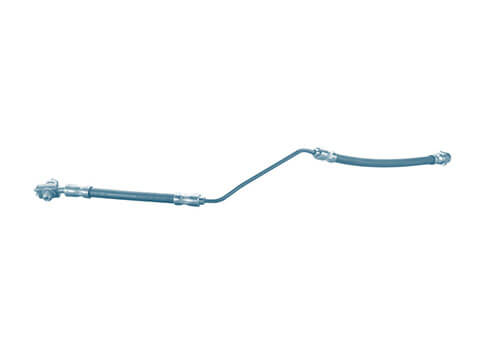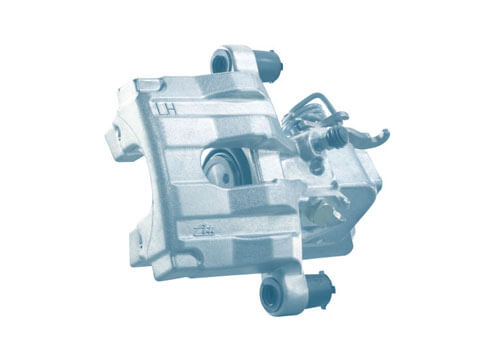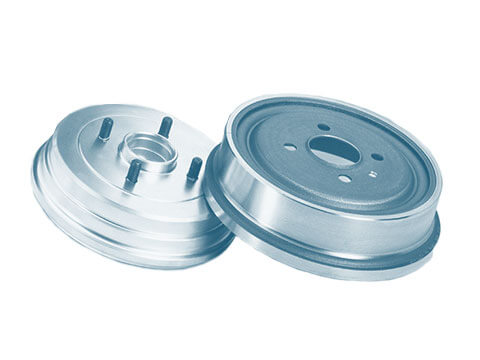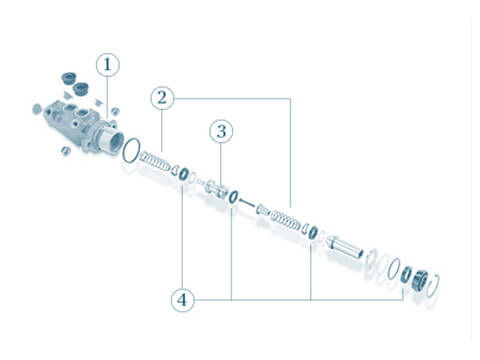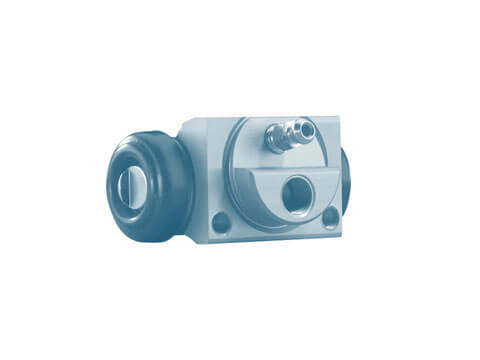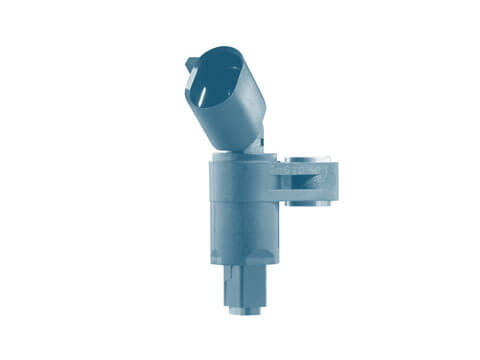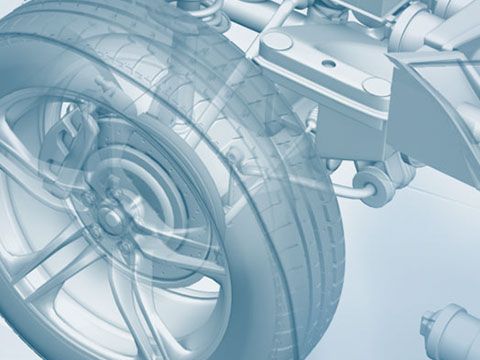Electric parking brake - handbrake
Electric parking brakes, which are activated using a switch in the passenger compartment, are increasingly superseding mechanical handbrakes. They are deployed to prevent parked vehicles from rolling away.
Function
The brake callipers of the electric parking brake (often shortened to “EPB”) are equipped with a drive unit comprising an electric motor and gear unit – the so-called “actuator”. This is activated using a switch and engages the brake by shifting the brake piston in the brake calliper so that the brake pads are pressed against the brake disc. This enables the vehicle to be stopped and parked safely, even on steeply sloping roads. An electric parking brake therefore represents a combination of a hydraulic foot brake and an electrically actuated parking brake.

Integration into the vehicle electronics has considerably expanded electric parking brakes’ range of functions in comparison to mechanical handbrakes.
Here are a few examples:
Child lock
The electric parking brake cannot be disengaged accidentally when the ignition is switched off.
Automatic engagement
When the vehicle is at a standstill, the parking brake is automatically engaged as soon as the driver-side door is opened or the driver unfastens their seatbelt.
Automatic release
With this additional function, the parking brake is disengaged as soon as the driver releases the clutch with a gear engaged or, in vehicles with automatic transmissions, when the brake pedal is released.

Safety
The high and – most importantly – constant clamping force applied by the electric parking brake even enables the vehicle to be safely stopped and parked on extremely steep slopes. This alone is an important safety consideration. However, the true strengths of this system can be seen even more clearly in the dynamic safety functions:
Emergency braking function
In the case of a mechanical brake, the statutory minimum retention value of a parking brake can only be applied when a significant force is exerted on the part of the driver. Furthermore, a mechanical system must be in flawless technical condition to do so. This is often far from guaranteed in older vehicles. The electric parking brake offers a clear safety advantage in this case, too. If the electric parking brake is activated while driving, the EPB control unit interprets this as an emergency braking manoeuvre. To prevent the vehicle from swerving due to the rear axle locking when this occurs, the parking brake is intermittently engaged and disengaged again – similar to the function of an anti-lock braking system. In this mode, the vehicle is safely braked until it comes to a standstill.
Starting aid
When starting off on a steep incline (hill-starting), the parking brake automatically disengages once the engine is generating sufficient torque, which enables the vehicle to drive off safely. If the vehicle should accidentally stall and roll backwards, this situation is detected by the EPB system, and the parking brake is immediately engaged.
Protection of the environment
Wear on the transmission devices of a mechanical handbrake (handbrake cables, pulleys, levers, etc.) can lead to the friction materials on brake pads or brake shoes permanently making contact with the disc or brake drum. This results in increased environmental pollution in the form of brake dust. In addition, all components must be replaced and disposed of from time to time. The complete omission of these components from an electrical system enables electric parking brakes to make a positive environmental contribution.
Value retention
Thanks to the electric parking brake, frozen, stiff or even ruptured handbrake cables and the repairs incurred by these scenarios can finally be banished to the history books. Electric parking brakes are less susceptible to faults and almost maintenance-free. Nowadays, an increasing number of vehicles are equipped with electric parking brakes, even in the mid-range segment. As sought-after safety equipment, electric parking brakes play an important part when the vehicle is re-sold.

